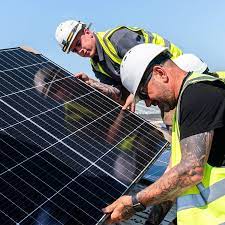
Reducing energy use in a retail store isn’t just a sustainability tick-box anymore — it’s a direct path to healthier margins. With electricity and gas costs continuing to rise across Australia, store owners are waking up to a simple truth: what you don’t waste, you don’t pay for.
So, how do you realistically reduce retail store energy bills without compromising comfort or customer experience? Let’s unpack that — quickly and practically.
What’s the fastest way to cut retail store energy costs?
If you want the quick wins, start here:
- Switch to LED lighting – LEDs use up to 80% less energy than halogen bulbs and last much longer.
- Install timers or motion sensors – Perfect for storerooms, staff areas, and bathrooms.
- Turn off equipment overnight – That includes POS systems, monitors, and displays.
- Review your thermostat – Each degree of heating/cooling adjustment can cut costs by 5–10%.
These changes are low-cost, high-impact, and most retailers can implement them in a single weekend.
How can lighting affect a store’s energy usage?
Lighting often accounts for more than half of a retail store’s electricity use, especially in fashion or lifestyle outlets where atmosphere matters. But not all lighting is equal.
Modern LEDs don’t just consume less power — they run cooler, reducing the strain on your air conditioning too. You can also segment your lighting (e.g., ambient, task, feature) and only run what’s needed.
A boutique in Melbourne’s CBD recently cut its monthly energy bill by $350 just by reprogramming its spotlighting schedules — a change that cost less than $150 in parts and labour.
What appliances use the most electricity in stores?
This surprises some people: it’s not always the lighting. According to Perch Energy, the biggest energy guzzlers often include:
- Heating and cooling systems
- Refrigeration (in grocery, bottle shops, florists)
- Display screens and digital signage
- Old or poorly maintained appliances
Even store background music systems and scent diffusers can add up over time. An audit (DIY or professional) is the first step toward identifying the hidden culprits.
How can smart tech reduce your energy footprint?
Smart tech isn’t just for big-box stores anymore. Tools like energy management software, IoT-connected plugs, and app-based thermostats can give small retailers control they never had before.
Examples include:
- Smart meters to track usage in real-time
- Automated blinds that adjust to reduce heat gain
- AI-powered scheduling systems that learn peak times and adapt lighting or HVAC accordingly
One Sydney pet store used smart plugs to automatically shut off its aquarium lighting after hours — a tiny change that cut 7% off its power bill annually.
Why should staff training be part of your energy strategy?
Because even the best system won’t work if your people override it.
Train staff on:
- Shutting down devices at close
- Keeping doors closed when heating or cooling
- Using blinds or awnings to manage indoor temperature
- Reporting faulty fridges, fans or fixtures
Reinforce the message regularly. Put reminders near switches. Celebrate good habits. And make sure it’s consistent — not just for show when the boss is around.
What incentives exist for Australian retailers to go energy-smart?
You might be eligible for rebates, subsidies, or free upgrades depending on your location and store type. Government and local councils regularly support businesses that invest in energy efficiency.
Check out resources like Business.gov.au’s energy management portal for programs that match your setup.
Some small retailers have accessed thousands in subsidies for solar panels, efficient HVAC upgrades, or refrigeration overhauls — it’s worth digging into.
What are the long-term strategies for reducing energy costs?
Once you’ve sorted the low-hanging fruit, consider bigger investments:
- Solar panels – Lower your grid reliance and get feed-in benefits
- Energy-efficient shop design – Lighter colours, natural light, and insulation
- Scheduled maintenance – Poorly maintained systems often overwork and waste energy
- Negotiating better energy rates – With the right data, you can approach providers confidently
Some businesses also choose to partner with energy procurement companies to streamline the process and access tailored deals.
Are retail energy savings really worth the effort?
Absolutely — and not just for the bottom line.
- Customers care more than ever about sustainability.
- Staff appreciate comfortable, efficient workplaces.
- Small savings compound into large ones over time.
And for small-to-medium stores already running on tight margins, a 10–20% saving on energy bills can be the difference between staying afloat or sinking.
Anyone who’s tried managing a shop during a summer heatwave or winter chill knows just how much strain inefficient systems can add. It’s not just numbers on a bill — it’s comfort, reputation, and sanity.
FAQ: Quick Answers for Busy Retailers
Q: What’s the cheapest energy-saving change I can make today?
A: Replacing halogen bulbs with LEDs — often less than $10 per bulb and pays back within months.
Q: How do I track what’s using the most energy?
A: Use smart plugs or a basic power usage monitor on suspect appliances.
Q: Can I save money by switching energy providers?
A: Often, yes. Use your store’s usage data to negotiate or switch to a better deal.
Reducing your store’s energy use isn’t about cutting corners. It’s about running smarter. And smarter retail operations start with visibility — into costs, behaviours, and systems.
To explore ways to reduce retail store energy bills, smart retailers are turning to digital platforms that put that visibility front and centre.
